Chinese Cuisine — Origin, Classification, Tradition, Culture, and Facts
Chinese Cuisine encompasses all culinary arts, foods, and dietary habits that have originated in China throughout history.
Based on diverse geographical features, climates, regional products, and history, each region developed its own culinary style, gradually culminating in the Eight Cuisines during the Qing Dynasty (1636 — 1912).
Today, Chinese Cuisine comprises the major Eight Cuisines and numerous other flavorful regional cuisines, all of which are integral components of China's rich regional cultures.

Part of Painting (Wen Hui Tu) by Emperor Zhao Ji (1082 — 1135), Presenting the Feast of Intelligent Scholars — Taipei Palace Museum
Shandong Cuisine or Lu Cuisine of the Qilu Culture
Sichuan Cuisine or Szechuan Cuisine of the Bashu Culture
Jiangsu Cuisine or Su Cuisine in Diverse Culture
Guangdong Cuisine or Cantonese Cuisine of the Lingnan Culture
Anhui Cuisine or Hui Cuisine of the Huizhou Culture
Zhejiang Cuisine or Zhe Cuisine of the Wuyue Culture
Hunan Cuisine or Xiang Cuisine of the Huxiang Culture

Representative Dishes of the Eight Chinese Cuisines, Picture from Xin Shuishui.
Shandong Cuisine or Lu Cuisine of The Qilu Culture — Salty and Fresh
Shandong Cuisine or Lu Cuisine is the culinary art of Qilu Culture in today's Shandong Province.
Qilu Culture
After the Zhou Dynasty (1046 BC — 256 BC) was established near the Yellow River basin, the King of Zhou enfeoffed some of his trusted ministers and relatives to reign vassal states, and the Qi and Lu States were two of the most influential ones.
-
Qi State was founded by Jiang Ziya (? — about 1015 BC), the great marshal and strategist who contributed significantly to defeating the Shang Dynasty (1600 BC — 1046 BC) and establishing the Zhou Dynasty.
-
Lu State was founded by Ji Dan, the younger brother of the King of Zhou, respected as Duke of Zhou, who reigned the empire as a remarkable regent and established the Rites of Zhou.
Since then, this region has thrived under their brilliant reigns and gradually formed the Qilu Culture.
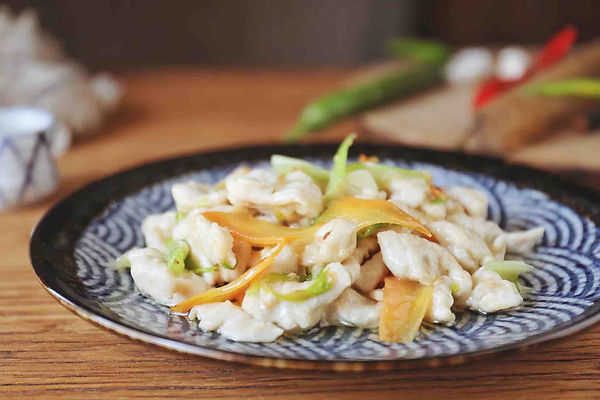
Shandong Cuisine Dish the Sautéed Chicken Slices in Egg-White (Furong Jipian), Picture from Doufizhu.
Formation of Shandong Cuisine or Lu Cuisine
The region of Shandong or Qilu in the east of China, where the lower reaches of the Yellow River flow through and form vast productive plains, and borders the Bohai Sea and the Yellow Sea, has a relatively temperate climate and extremely affluent products.
Confucius (551 BC — 479 BC) and Mencius (about 372 BC — 289 BC), founders and great philosophers of Confucianism, all came from the Qilu Region, and their dining culture spread as fast and influential as their ideologies.

Seafood Soup (Bazhen Zhong) in Confucius Mansion Banquet Dish
Gradually, Shandong Cuisine became the representative culinary art of northern China and the major cuisine for the royal families of the Ming (1368 — 1644) and Qing (1636 — 1912) Dynasties.

Royal Banquet of Eastern Han Dynasty (25 — 220) — Grave Mural in Dahuting Tomb in Zhengzhou
Facts and Characteristics of Shandong Cuisine or Lu Cuisine
-
Therefore, Shandong Cuisine or Lu Cuisine is the most historical and original cookery cuisine, which other culinary schools have not influenced.
-
Shandong Cuisine, or Lu Cuisine, includes over 91 cooking methods.
-
Different types of time-consuming soup stock, which usually takes hours or days of stewing and filtering, is an important ingredient in many dishes of Shandong Cuisine.
-
Shandong Cuisine regulated the fundamental essence of the Chinese Food Culture, which includes balance, refinement, and delicacy.

Shandong Cuisine Dish the Braised Intestine in Brown Sauce (Jiuzhuan Dachang)
-
Meanwhile, Shandong Cuisine set a series of fundamental dining etiquettes in ancient China, including decoration and regulation of dishes for each important occasion like a wedding or birthday, serving order, collocation of dishes, seating order, dress code, etc.
-
Today, Shandong Cuisine has developed into two paths:
Home Cooking — most northern Chinese follow the culinary methods of Shandong Cuisine.
High-end Culinary — dishes that need expensive materials and time-consuming and complicated cooking methods are mainly served in high-end occasions and fine dining restaurants.

Shandong Cuisine Dish the Stir-fried Pig Tripe and Chicken Gizzards (Youbao Shuangcui)
Sichuan Cuisine or Szechuan Cuisine of The Bashu Culture — Numbing, Spicy, Fresh, and Fragrant
Sichuan Cuisine or Chuan Cuisine, or Szechuan Cuisine, is the culinary art of Bashu Culture in today's Sichuan Province and Chongqing Municipality.
Bashu Culture
Ba and Shu were two civilizations in the Neolithic era. They later formed kingdoms and became vassal states of the Zhou Dynasty (1046 BC — 256 BC) for their contributions to defeating the last king of the Shang Dynasty (1600 BC — 1046 BC).
Centuries later, during the Warring States Period (403 BC — 221 BC), these two states perished by Qin State, this region became an important part of successive unified dynasties, and their cultures gradually merged and formed the Bashu Culture.

Sichuan Cuisine Dish the Gongbao Chicken (Gongbao Jiding), Picture from Yanmou Mumu.
Formation of Sichuan Cuisine or Szechuan Cuisine
The region of Sichuan or Bashu in southwest China is located in the high reaches of the Yangtze River (or Chang Jiang).
Most of the population lives in the fertile Sichuan Basin, surrounded by magnificent mountains, and the climate there is warm and humid.
The Bashu area kept flourishing during and unified Qin (221 BC — 207 BC) and Han (202 BC — 220 AD) Dynasties and experienced rapid development during the Three Kingdoms (220 — 280) when the Shu Han Empire was established there.
After the An-Shi Rebellion's outburst, Emperor Li Longji (685 — 762) fled for its relatively enclosed and safe geology; later, more people escaped to avoid chaotic wars.
.jpg)
Emei Mountains in Sichuan Province
Their arrival then brought more culinary arts into this region.
Hence, since the Song Dynasty (960 — 1279), Sichuan Cuisine officially became an independent and influential regional cuisine of China.
Today's Sichuan Cuisine was formed after chili pepper was introduced in the late Ming Dynasty (1368 — 1644).
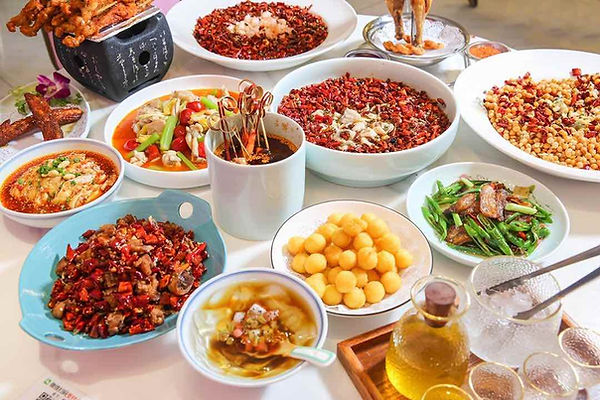
Hot and Spicy Sichuan Dishes
Facts and Characteristics of Sichuan Cuisine or Szechuan Cuisine
-
Sichuan Cuisine, or Szechuan Cuisine, has six primary tastes: spicy, tongue-numbing, sweet, salty, sour, and bitter.
Today, many dishes are combinations of more than one taste, and some even contain more than 20 compounded flavors.
-
Sichuan Cuisine, or Szechuan Cuisine, includes about 28 cooking methods.
-
The use of various flavorings is very important in Sichuan Cuisine.
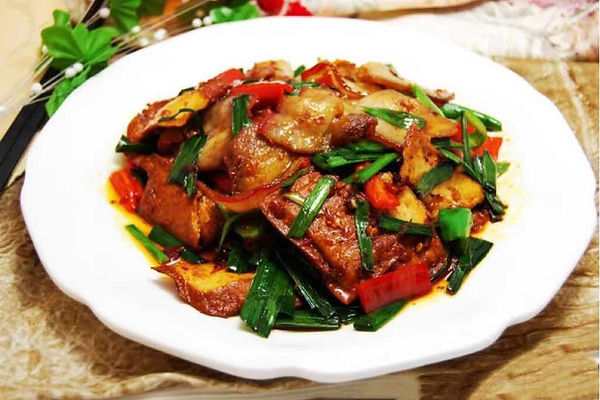
Sichuan Cuisine Dish the Twice-cooked Pork Slices (Huiguo Rou)
-
The fertile Sichuan Basin, enclosed by magnificent mountains, made transportation difficult in ancient times.
Hence, using different flavorings for cooking relatively not affluent local ingredients is important in Sichuan Cuisine.
-
Sichuan pepper, black pepper, and chili pepper are important ingredients in Sichuan Cuisine.
-
These condiments are easy to purchase and use, plus their palatable tastes, Sichuan Cuisine has become one of the most popular cuisines in China.
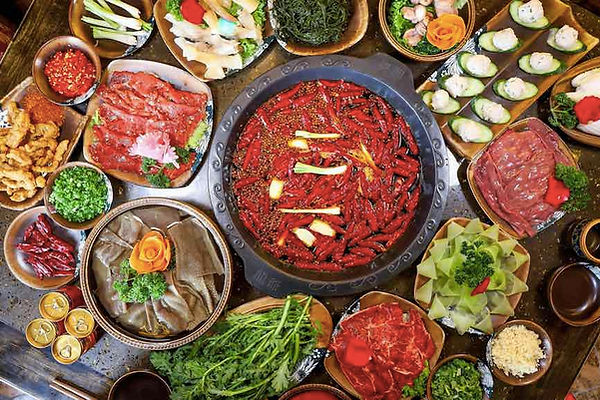
Sichuan Hotpot (Huo Guo)
Jiangsu Cuisine or Su Cuisine in Diverse Culture — Light, Fresh, and Sweet
Jiangsu Cuisine or Su Cuisine includes culinary arts of diverse regional cultures in today's Jiangsu Province: Huaiyang Cuisine, Jinling Cuisine, Xuhai Cuisine, and Sunan Cuisine.
Diverse Regional Cultures of Jiangsu Province
Today's Jiangsu Province's territory includes vast plains divided by many rivers and lakes, including the grand Yangtze River and Huai River.
The fertile plains and rich water system guaranteed affluent agricultural productions, and those two grand rivers also served as natural borders and military defensive lines throughout history.

Magnificent Taihu Lake in Jiangsu Province, Photo from Official Site of Lake Tai of Wuxi.
Therefore, from the Neolithic era to the late Qing Dynasty (1636 — 1912), many different regional cultures have been formed in this area, and the three most influential ones are:
-
Huaiyang Culture: Represented by Yangzhou city, an ancient state established around 486 BC, and thrived after becoming the transportation interchange of the Yangtze River and the Beijing-Hangzhou Canal, which was constructed under the command of Emperor Yang of Sui (569 — 618).
-
Jingling Culture or Nanjing Culture: Jinling is another name for Nanjing city, one of the most ancient and historical cities that had been the capital city of 13 kingdoms throughout history, including Eastern Wu (229 — 280), four Southern Dynasties (420 — 589), early Ming Dynasty (1368 — 1420), etc.
-
Wu Culture: Represented by Suzhou and Wuxi, an important part of Wuyue Culture.

Jiangsu Cuisine Dish the Stewed Crab and Pork Meatball (Xiefen Shizitou)
Facts and Characteristics of Jiangsu Cuisine or Su Cuisine
-
Jiangsu Cuisine, or Su Cuisine, is the second biggest cuisine for the royal families of the Qing Dynasty (1636 — 1912) and the leading culinary art of today's state banquets of China.
-
Based on the diverse regional cultures, Jiangsu Cuisine or Su Cuisine consists of four primary culinary schools: Huaiyang Cuisine, Jinling Cuisine, Xuhai Cuisine, and Sunan Cuisine.
-
Exquisite cutting, heat controlling, and plate presentation are essential skills in cooking Su Cuisine.
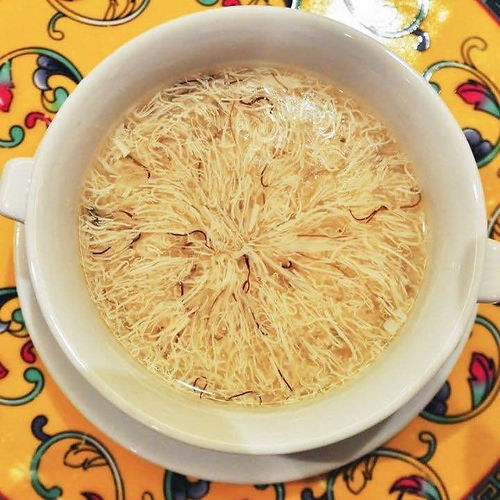
Jiangsu Cuisine Dish the Wensi Tofu
-
Dishes of Su Cuisine are relatively sweet and light and focused on the original flavor of the ingredients.
-
The fresh taste is another key of Jiangsu Cuisine, which has relatively strict standards of the place and the season of cooking ingredients.
Hence, some famous dishes might be only served during specific periods.
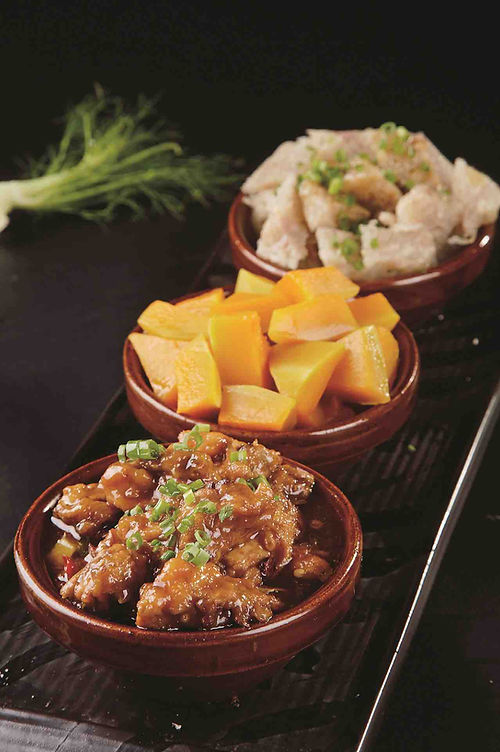
Steamed Local Vegetables and Meat Dishes of Jiangsu Cuisine, Picture From Lv Kaifeng.
Guangdong Cuisine or Cantonese Cuisine of the Lingnan Culture — Mild, Natural, and Fresh
Guangdong Cuisine, Cantonese Cuisine, or Yue Cuisine, is the culinary art of Lingnan Culture in today's Guangdong Province.
Lingnan Culture
Lingnan Culture is a relatively young regional culture that originated in 214 BC when Qin's army occupied this area and had many people migrate into this area under the command of Emperor Qin Shi Huang.
Afterward, although some independent regimes were established there for short periods, most times, the Guangdong area was an important region of all the other unified dynasties and formed the Lingnan Culture.

Huo Er Wu the Representative Architecture of Lingnan Culture
Formation of Guangdong Cuisine or Cantonese Cuisine
Located in the south, Guangdong Province is traversed by the Pearl River or Zhu Jiang and borders the South China Sea.
It features a hot and humid subtropical climate with diverse terrains, including mountains, plains, and tablelands.
The geological diversity and climate of the region provide an abundance of rich and high-quality food. Continuous waves of immigrants throughout history have brought refined culinary art and skills, especially flourishing during the prosperous Southern Song Dynasty (1127 — 1279) in the south.
Since then, Guangdong Cuisine, or Cantonese Cuisine, stepped into a rapid development chapter and became one of the most popular cookeries in China.

Some Representative Dim Sum Dishes of Guangdong Cuisine or Cantonese Cuisine
Facts and Characteristics of Guangdong Cuisine or Cantonese Cuisine
-
Guangdong Cuisine, or Cantonese Cuisine, has the most affluent cooking ingredients.
-
Saving and presenting the original taste of ingredients is a fundamental idea in Cantonese Cuisine.
-
Most authentic Chinese restaurants overseas are based on Guangdong Cuisine or Cantonese Cuisine dishes.

Cantonese Cuisine Dish the Roasted and Cured Meat Platter (Shaola Pinpan)
Anhui Cuisine or Hui Cuisine of the Huizhou Culture — Salty and Fresh
Anhui Cuisine or Hui Cuisine is the culinary art of Huizhou Culture in today's Anhui Province.
Huizhou Culture
Huizhou Culture has been the most influential regional culture in today's Anhui Province because of its wealthy merchants and political power history.
Many people migrated to this mountain area to escape from chaotic wars in the late Tang Dynasty (618 — 907).
It is relatively isolated by magnificent mountains but not a good place for agricultural production.
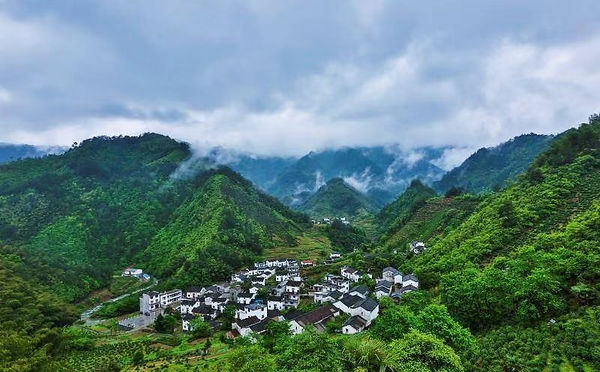
A Village in Huizhou Surrounded by Grand Mountains, Photo from Official Site of Huizhou.
Hence, since the Song Dynasty (960 — 1279), the people in the region began engaging in trade ventures afar, using their earned wealth to educate talented individuals for participation in the Imperial Exam and subsequent roles as political officials.
During the Ming Dynasty (1368 — 1644) and the Qing Dynasty (1636 — 1912), this region gave rise to an influential and prosperous merchant group, comprising numerous brilliant scholars and politicians.
They played a pivotal role in disseminating their regional culture, known as the Huizhou Culture, throughout the nation.
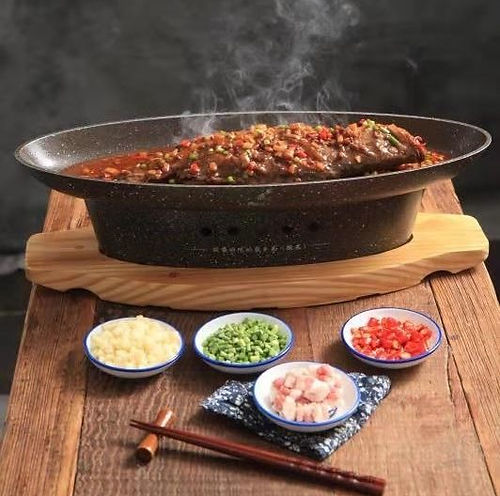
Anhui Cuisine Dish the Stinky Mandarin Fish (Chou Guiyu), Picture from Anhui Renjia.
Formation, Facts, and Characteristics of Anhui Cuisine or Hui Cuisine
-
Anhui Cuisine also includes other branches, but the Huizhou Cuisine from Huizhou Culture is the most fundamental and influential one.
-
Hui Cuisine formed and spread nationwide with their diligent merchants when they traveled around, who made many adjustments when they came back.
-
Roasting, steaming, stewing, braising, and smoking are the most frequently used cooking methods of Hui Cuisine, which all have strict requirements of duration and degree of heating.
-
Delicacies from local mountains and rivers are the main ingredients of delicate Hui Cuisine dishes.
-
Vegetable seed oil, soy sauce, sugar, and ham are common flavorings.
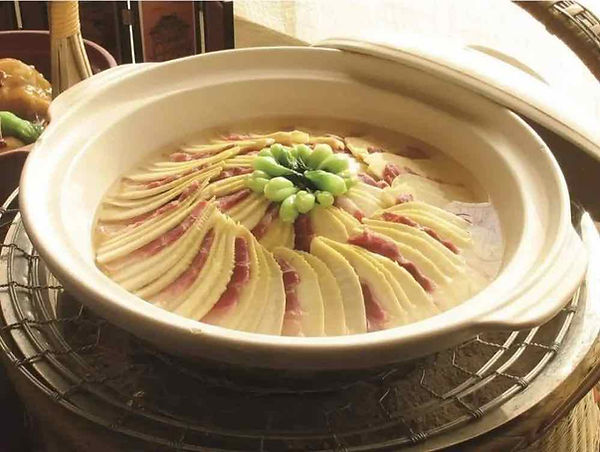
Anhui Cuisine Dish the Stewed Bamboo Shoots and Cured Meat (Wenzheng Shansun)
Zhejiang Cuisine or Zhe Cuisine of the Wuyue Culture — Fresh, Mellow, and Light
Zhejiang Cuisine or Zhe Cuisine is the culinary art of Wuyue Culture in today's Zhejiang Province.
Wuyue Culture
Wu and Yue were two kingdoms formed in the late Shang Dynasty (1600 BC — 1046 BC).
They achieved hegemony during the Spring and Autumn Period (770 BC — 403 BC) but were later annexed into the Chu State during the Warring States Period (403 BC — 221 BC).
Eventually, they became integrated as counties within the unified Qin Dynasty (221 BC — 207 BC).
After these annexations through wars, Wu and Yue's cultures gradually merged into each other.
Since Emperor Zhao Gou established the Southern Song Dynasty (1127 — 1279) and built his capital in Hangzhou city in Zhejiang, this region experienced rapid developments, while Wuyue Culture thrived simultaneously.

Cultural Landscape the West Lake in Hangzhou, Photo from Official Site of West Lake Scenic Area.
Formation of Zhejiang Cuisine or Zhe Cuisine
Zhejiang Province is in the east of China with long coastal lines, vast lakes and rivers, big mountains and hills, fertile plains and basins, and a mild climate.
Those geographical features provide people with the rich natural food and excellent agricultural environments.
After Southern Song Dynasty (1127 — 1279) was established there, the migrated royals and scholars brought exquisite culinary arts combined with local ingredients and dishes, forming the exquisite Zhejiang Cuisine.

Zhejiang Cuisine Dish the Stir-fried Shrimps with Local Longjing Tea Leaves (Longjing Xiaren)
Facts and Characteristics of Zhejiang Cuisine or Zhe Cuisine
-
Zhejiang Cuisine is famous for keeping the best taste of authentic ingredients and making them taste fresh and tender with exquisite cutting and plating skills.
-
Local ingredients and seasoning are both essential in Zhejiang Cuisine.
-
Frying, deep-frying, braising, steaming, and roasting are the most frequently used cooking methods in Zhejiang Cuisine.
-
Many dishes of Zhejiang Cuisine are named after historical figures and famous sites or relate to local folklore and legends.

Zhejiang Cuisine Dish the Dongpo Pork (Braised Pork Belly), Named After Great Scholar Politician Su Dongpo (1037 — 1101).
Hunan Cuisine or Xiang Cuisine of the Huxiang Culture — Spicy, Sour, and Salty
Hunan Cuisine, or Xiang Cuisine, is the culinary art of Huxiang Culture in today's Hunan Province.
Huxiang Culture
Evolved from ancient local cultures, today's Huxiang Culture was officially formed during the Song Dynasty (960 — 1279), when large numbers of northern people migrated here, and the economic and political center moved southward.

Hunan Cuisine Dish the Steamed Salted Fish with Fermented Black Soybeans (Douchi Zheng Xianyu)
Formation of Hunan Cuisine or Xiang Cuisine
Hunan Province in the middle south of China is a mountainous landlocked region in the middle reaches of the Yangtze River, with a humid climate.
With the appearance and development of Huxiang Culture in the Song Dynasty, more immigrants moved in.
They combined existing cookery skills with local ingredients and dishes, adding spicy and sour flavorings to deal with the intense humidity, and formed Hunan Cuisine or Xiang Cuisine.

Zhangjiajie National Forest Park in Hunan Province
Facts and Characteristics of Hunan Cuisine or Xiang Cuisine
-
Hunan Cuisine or Xiang Cuisine dishes usually taste spicy, sour, and salty, which is believed to be efficient and healthy for people to deal with the intense humidity there.
-
Bitter taste dishes have been popular in the Hunan area throughout history.
-
Besides traditional cooking methods, smoking and pickling are important as well.
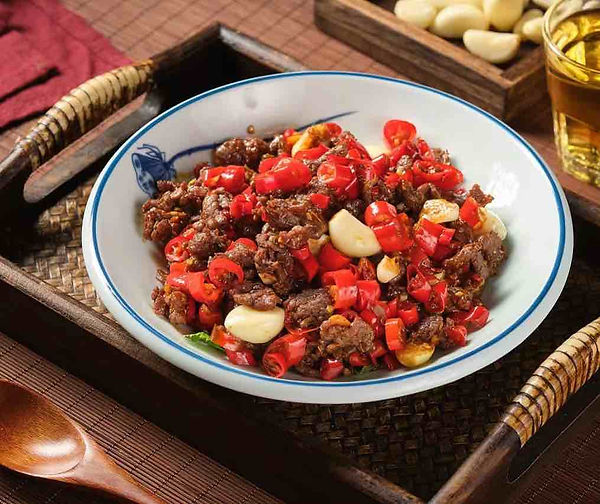
Hunan Cuisine Dish the Fried Beef (Chao Niurou), Picture from Yin Zichu.
Fujian Cuisine or Min Cuisine of the Mindu Culture — Light, Sweet, and Sour
Fujian Cuisine, or Min Cuisine, is the culinary art of today's Fujian Province, represented by cuisines of the Mindu Culture.
Mindu Culture
Since the Neolithic era, local inhabitants have formed distinctive civilizations, which later started to merge with immigrants after Qin Shi Huang established the unified Qin Dynasty (221 BC — 207 BC).
This region was included in the giant Qin Empire and kept developing slowly.
During the Song Dynasty (960 — 1279), political and economic centers migrated to the south.
Some important port cities along the Maritime Silk Road for international trade developed in this region, giving rise to the Mindu Culture.
It was a fusion of the Han Culture, ancient local civilizations (Min and Yue), and overseas cultures.
.jpeg)
Mount Wuyi in Fujian Province
Formation of Fujian Cuisine or Min Cuisine
Fujian Province is in the southeast of China, with a long coastal line, vast fertile plains, mountains, and warm and humid weather.
Hence, seafood, local vegetables, and fruits are affluent and productive.
With the formation of the diverse Mindu Culture and other regional cultures (such as Minnan Culture) of this region, Fujian Cuisine, or Min Cuisine, thrived as well.

Fujian Cuisine Dish the Buddha Jumps Over the Wall (Fo Tiao Qiang), Picture from Xiaoyue.
Facts and Characteristics of Fujian Cuisine or Min Cuisine
-
Fujian Cuisine also includes other branches, but the culinary art of Mindu Culture is the most fundamental and influential one.
-
Exquisite and healthy soups are the essence of Fujian Cuisine.
-
Different types of seafood are important cooking ingredients because of the long coastal line of Fujian.
-
Sugar and vinegar are widely used in Fujian Cuisine to wipe off the fishy smells and tastes.
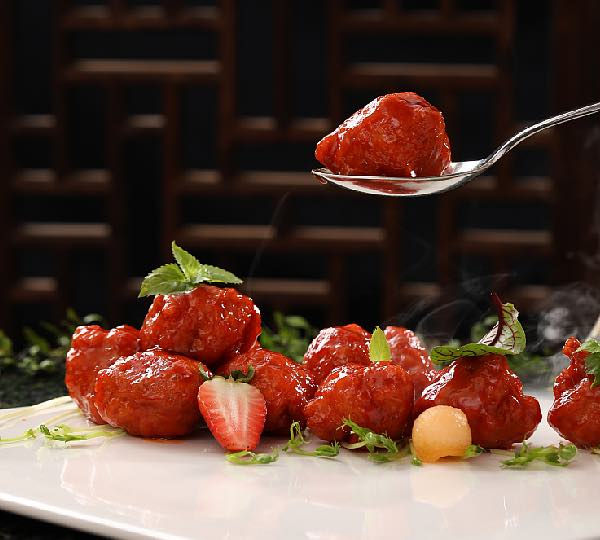
Fujian Cuisine Dish the Lychee Pork (Lizhi Rou), Picture from Yingzuilou.
You Might Also Like:
Chinese Dishes — History, Development, Culture, Names, and Facts
Chinese Food Culture — Fun Facts, History, Development, and Etiquette
Diverse and Traditional Chinese Drinks
Exquisite Dessert in Chinese Food Culture
Chinese Alcohol Culture and Toasting Etiquette
Origin, Classification, and Culture of Chinese Tea
Daily Etiquette and Table Manners in Tradition of China
Brief, Comprehensive Introduction to Chinese History
Chinese Patterns — Ultimate Introduction to Origin, History, Meaning, and Culture
